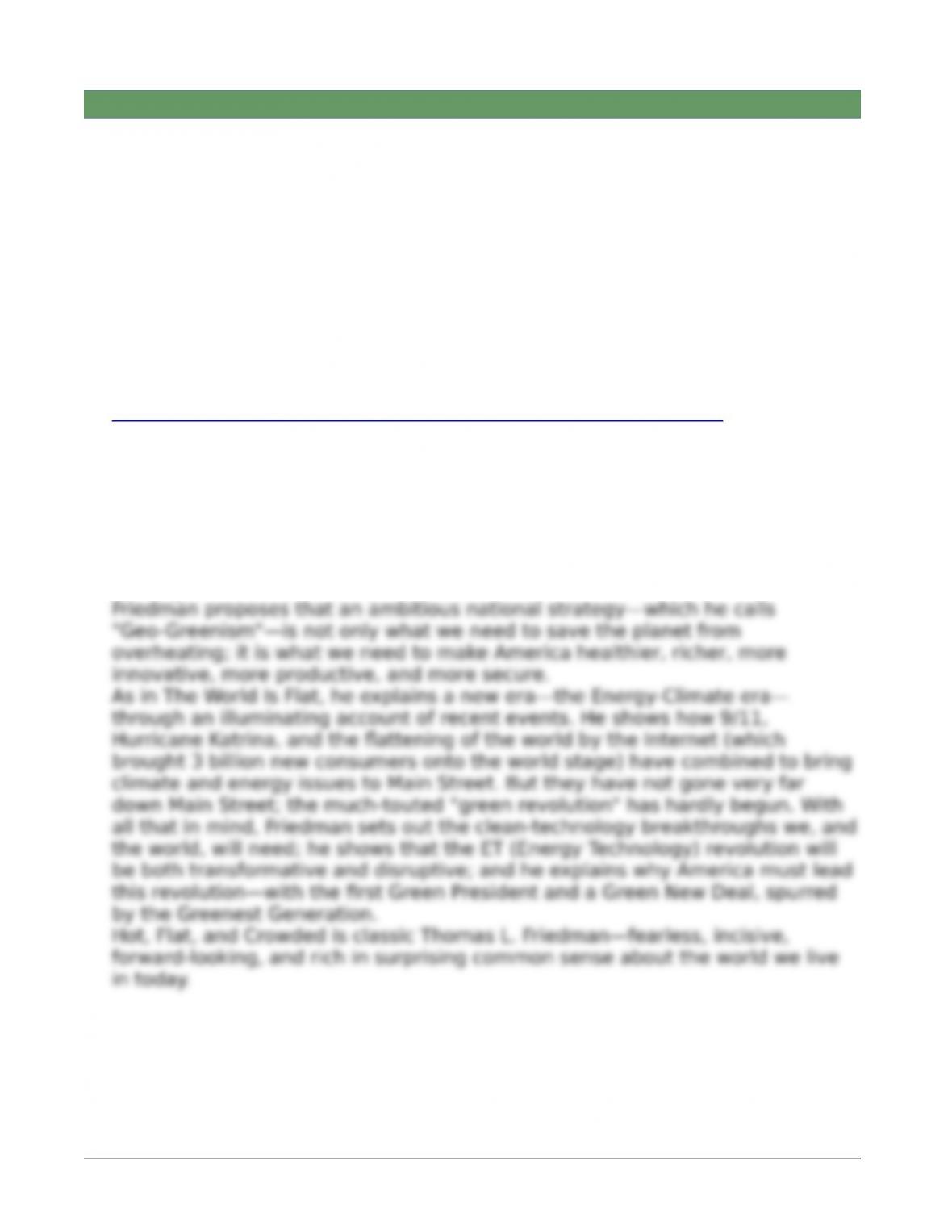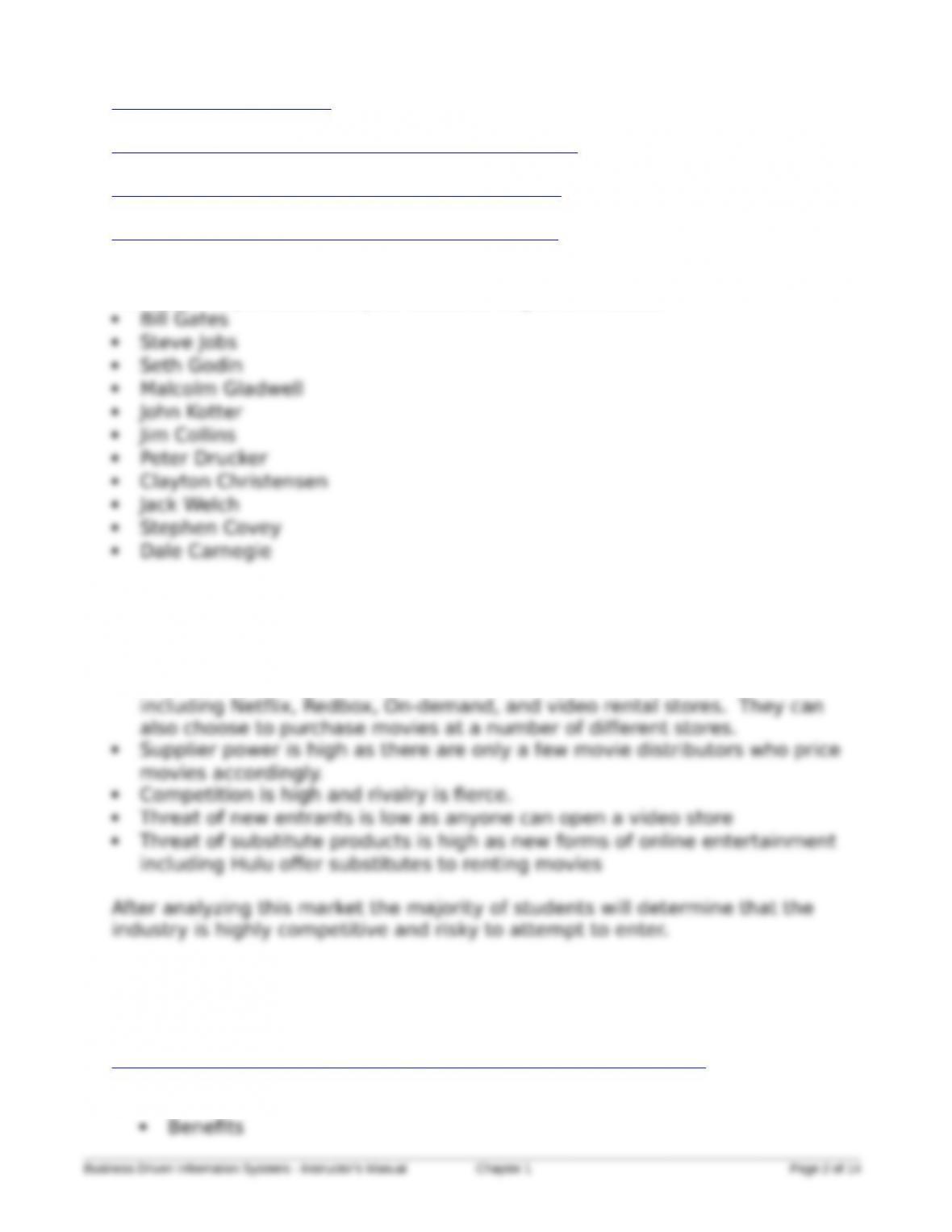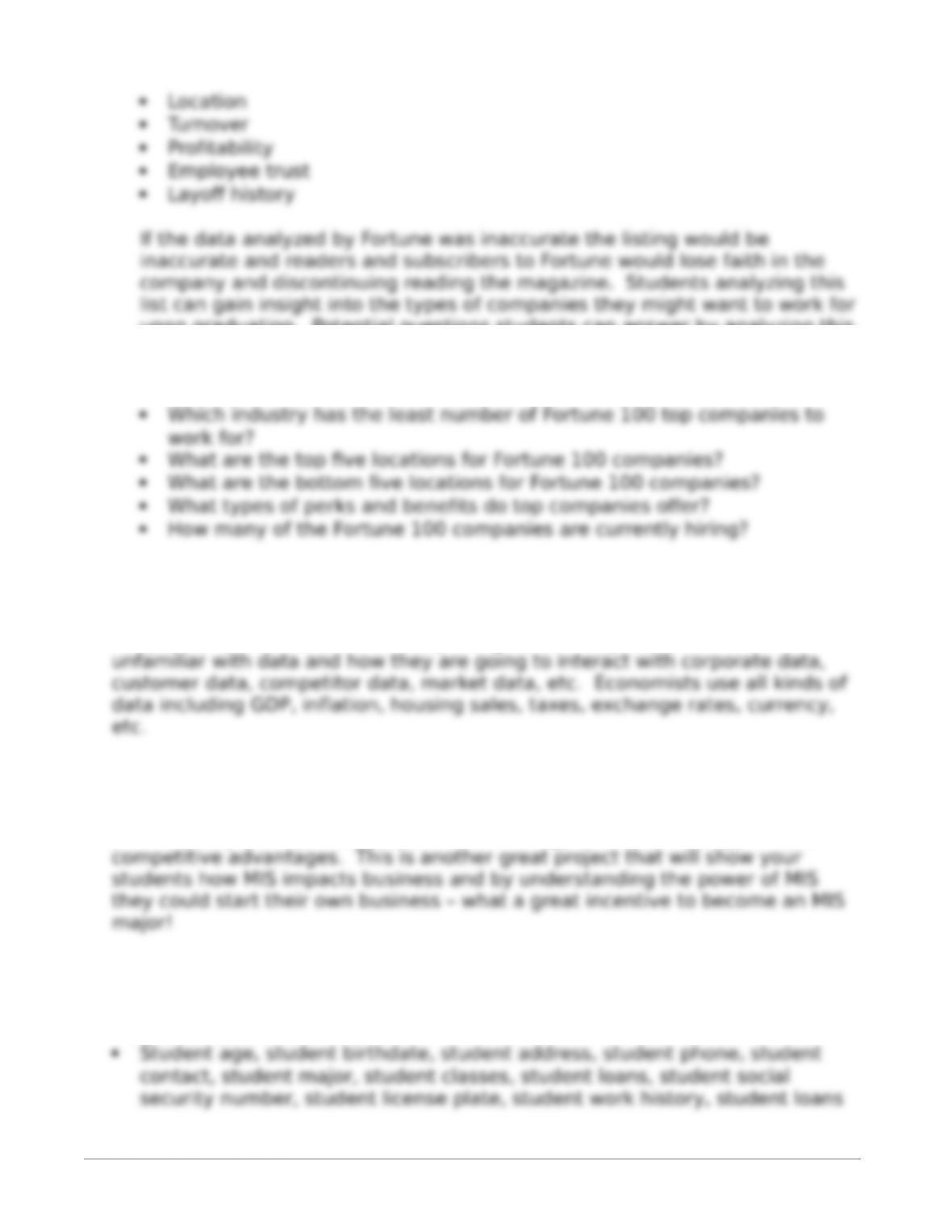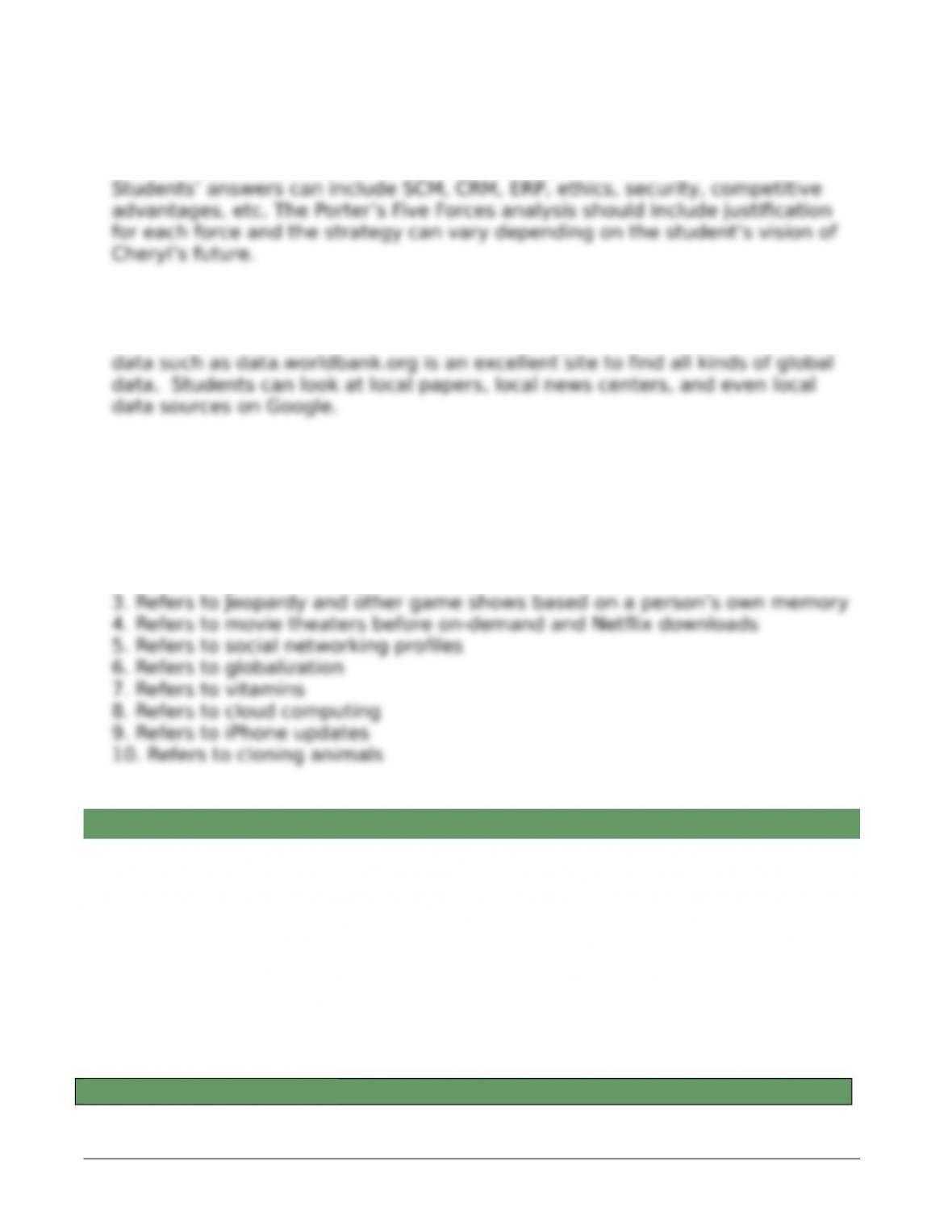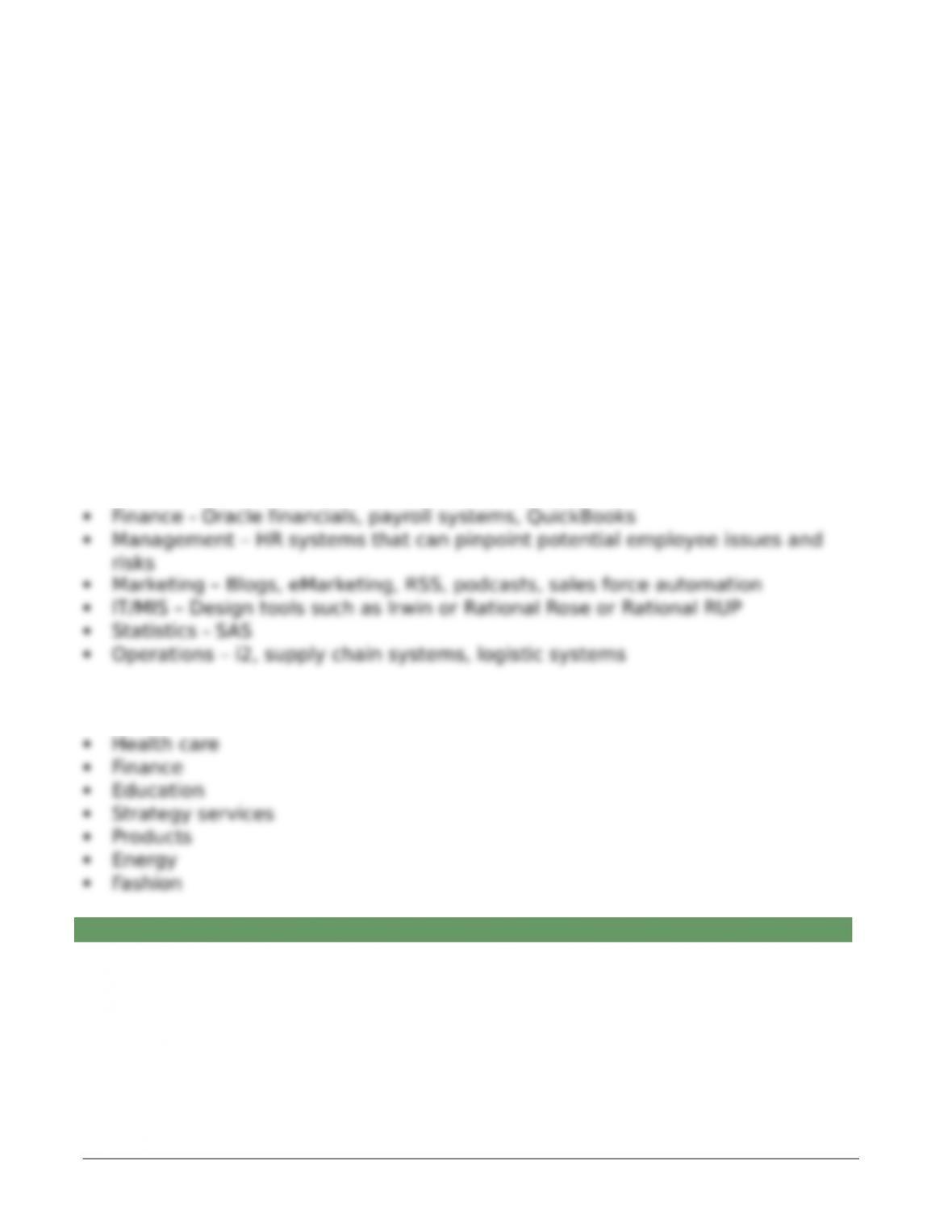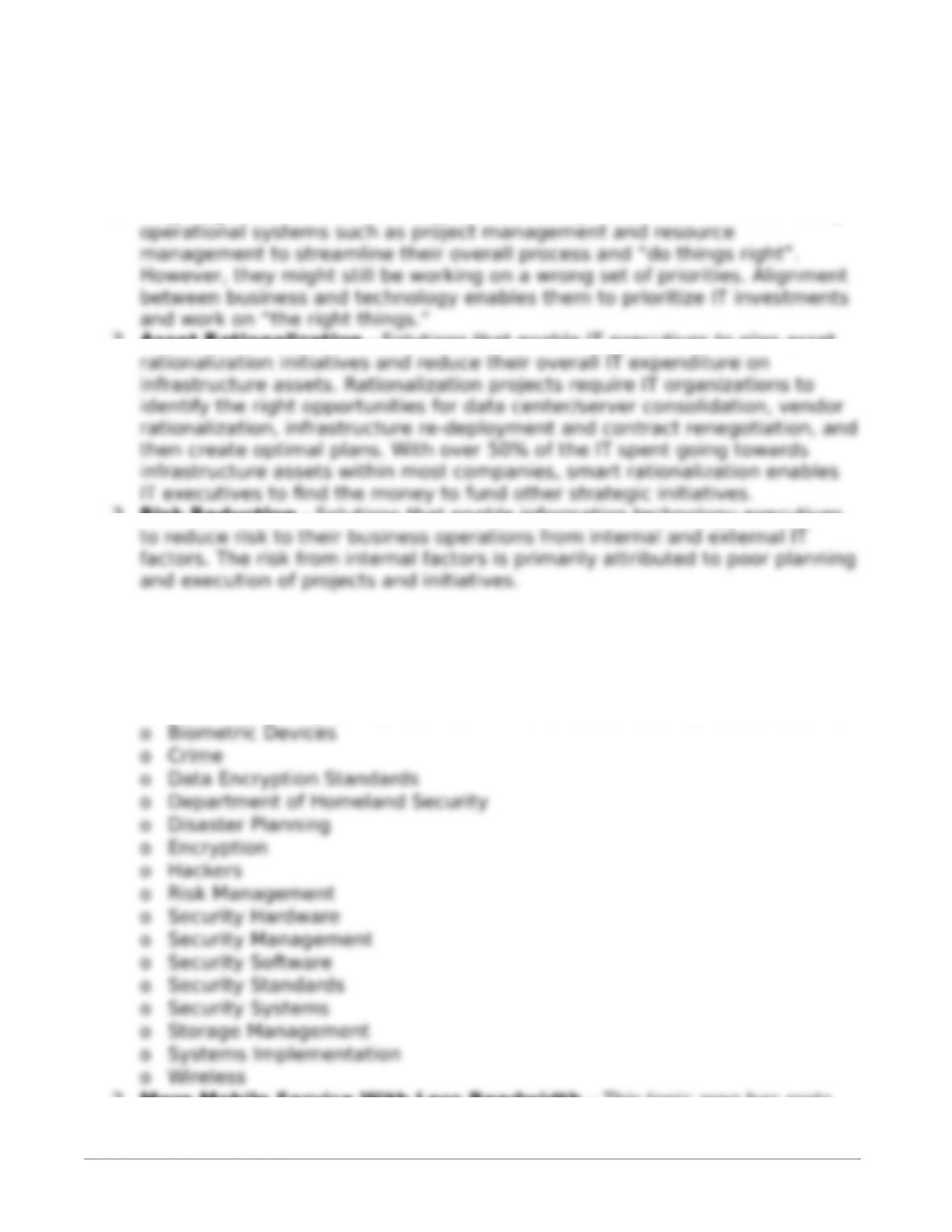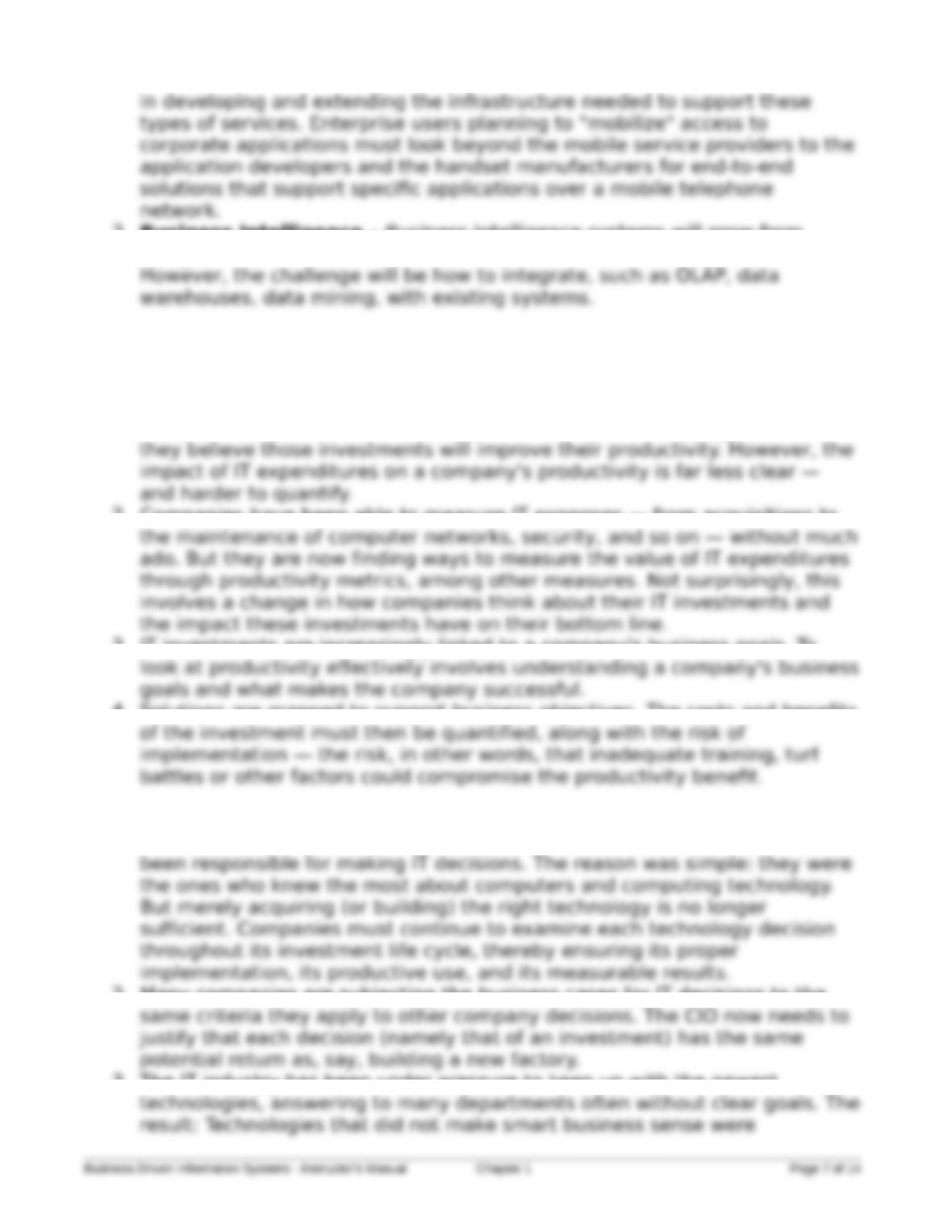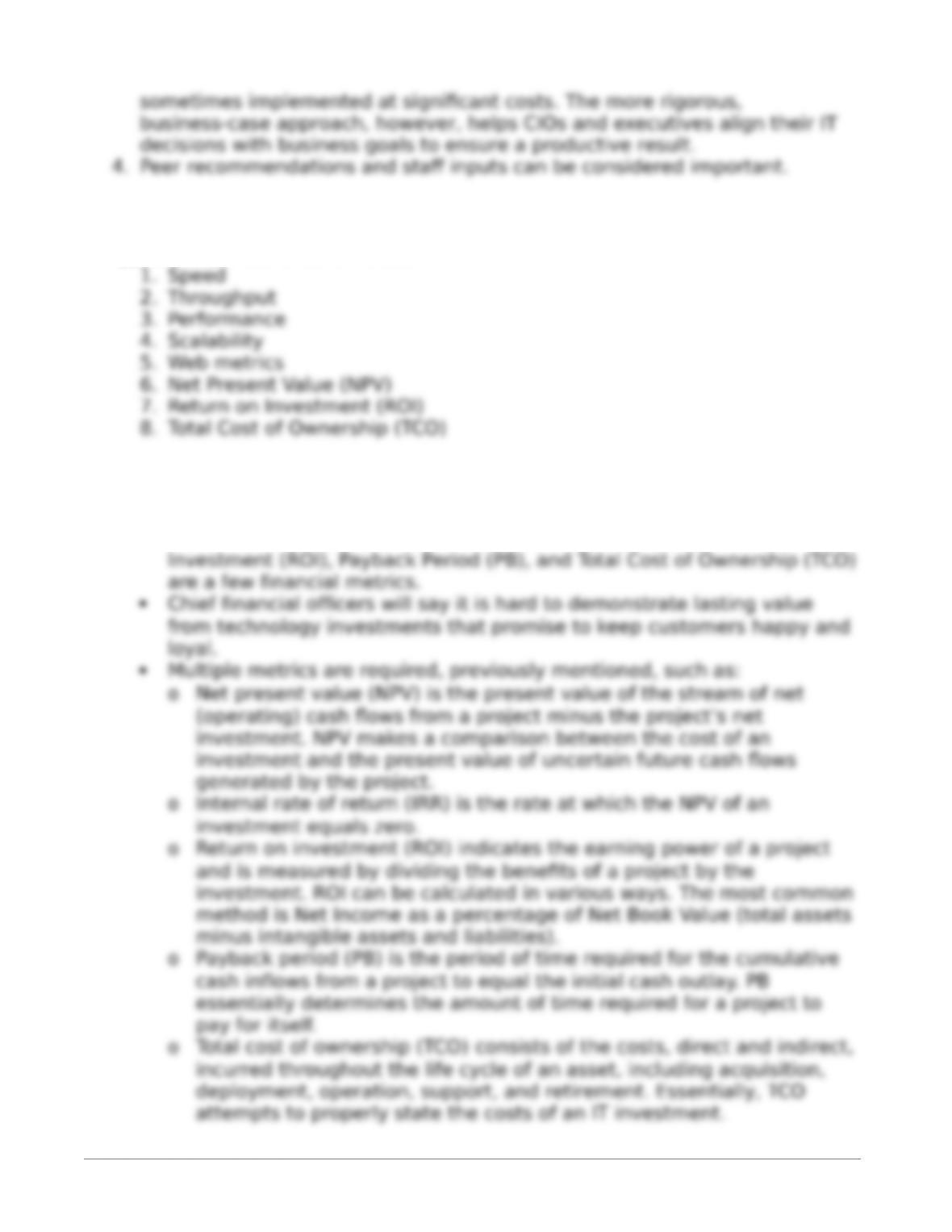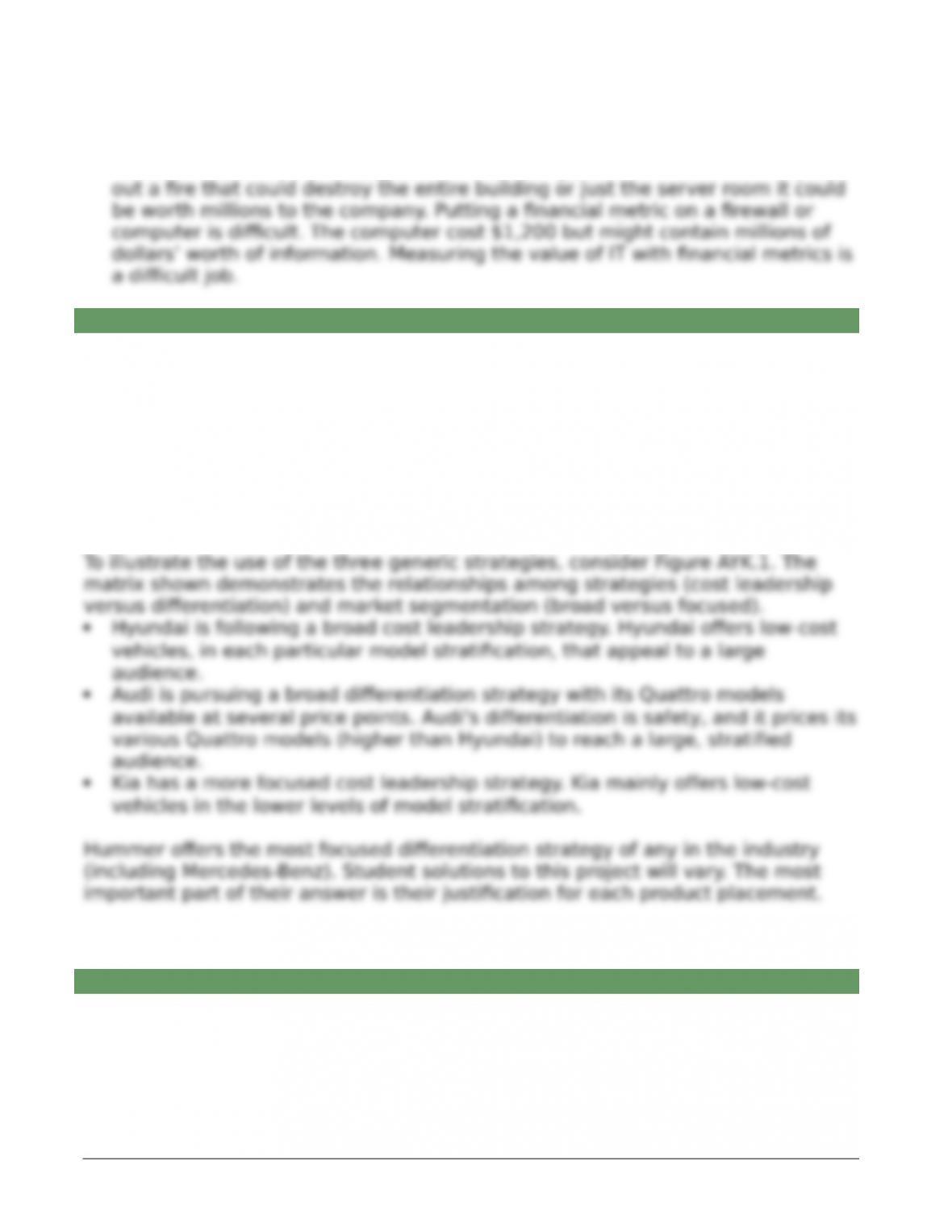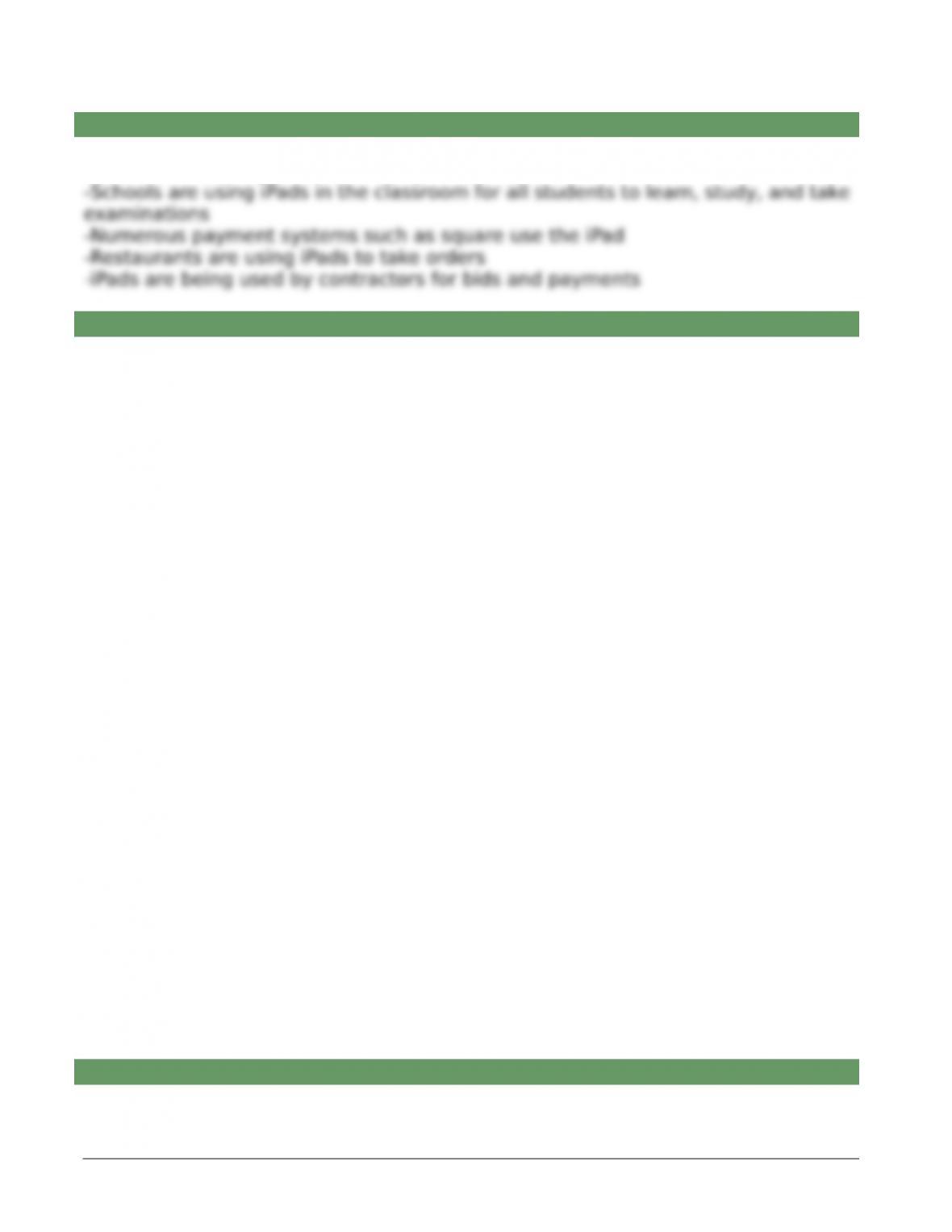Once your students have a few great ideas ask them to apply the concepts used
in this chapter to create a strategy document including Porter’s #ve forces, SWAT
analysis, Porter’s three generic strategies, and Porter’s value chain analysis.
A #rm must identify the business processes required to create its products or
services. Of course, it will want to ensure the processes add value and create
competitive advantages. To identify these competitive advantages, Michael Porter
created value chain analysis, which views a #rm as a series of business processes
that each add value to the product or service. Value chain analysis is a useful tool
for determining how to create the greatest possible value for customers. The goal
of value chain analysis is to identify processes in which the #rm can add value for
the customer and create a competitive advantage for itself, with a cost advantage
or product dierentiation.
The value chain groups a #rm’s activities into two categories, primary value
activities, and support value activities. Primary value activities, shown at the
bottom of the value chain, acquire raw materials and manufacture, deliver,
market, sell, and provide after-sales services. As a group, discuss the following in
relation to Starbucks:
Inbound logistics: acquires raw materials and resources and distributes to
manufacturing as required.
Operations: transforms raw materials or inputs into goods and services.
Outbound logistics: distributes goods and services to customers.
Marketing and sales: promotes, prices, and sells products to customers.
Service: Provides customer support after the sale of goods and services.
Support value activities, along the top of the value chain, include #rm
infrastructure, human resource management, technology development, and
procurement. Not surprisingly, these support the primary value activities. As a
group, discuss the following in relation to Starbucks:
Firm infrastructure: includes the company format or departmental structures,
environment, and systems.
Human resource management: provides employee training, hiring, and
compensation.
Technology development: applies MIS to processes to add value.
Procurement: purchases inputs such as raw materials, resources, equipment,
and supplies.
AYK 8: WHAT’S WRONG WITH THIS BATHROOM
Any company whose primary executives are not aligned with business goals and
strategies runs the risk of losing investors and credibility. Hiring the right people
and ensuring they act ethically is a key strategy for any business competing in the
information age. With the power of the Internet any bad decision can be made
public instantly. For this reason, ensuring your employees act ethically in all
manners is far more important today than ever before.
Business Driven Information Systems - Instructor’s Manual Chapter 1 Page 13 of 14
